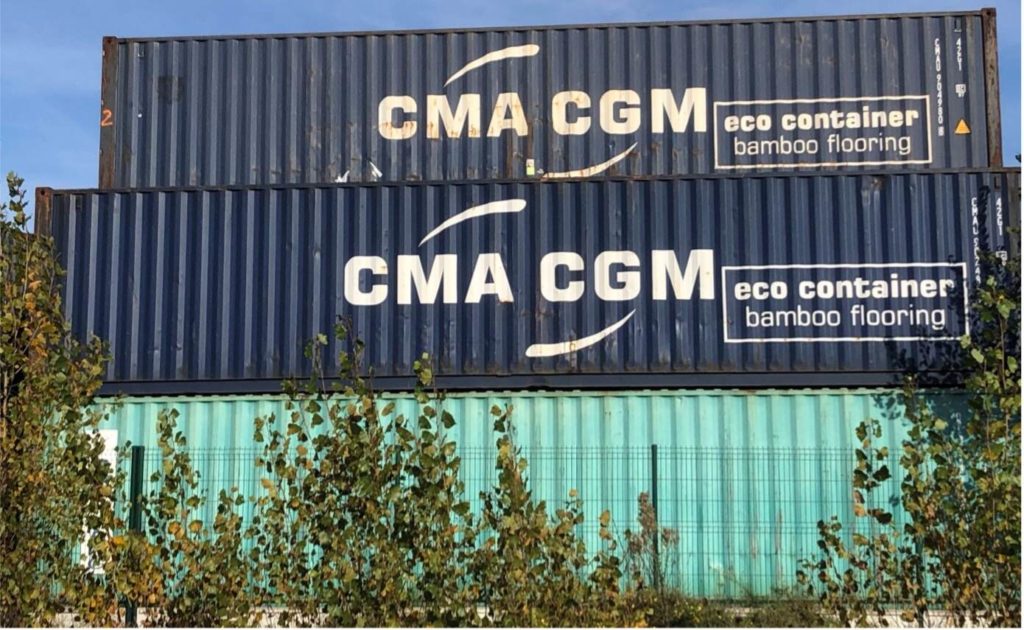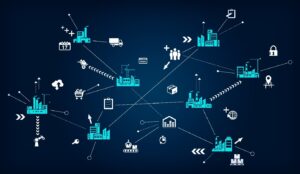You may have read about eco-friendly shipping containers, whose floors are made of bamboo, rather than devastating tropical wood forests.
Concerns have already been raised about the sustainability of the adhesive that’s used when manufacturing these floors. But the skeptics at the back of the room might point out bigger flaws. Can a container really be eco-friendly when its primary function is to transport goods all around the world, from the workshops of Asia to the frenzied markets of the West?
If you zoom out a bit, astronaut Thomas Pesquet should see, with his binoculars, something that looks like this: container ships criss-crossing the oceans carrying skyscrapers of containers, with a lot of carbon emissions.

Seen from this perspective, it’s classic greenwashing. The planet is unlikely to be saved by bamboo container floors.
Greenwashing and Lean Bashing
During the pandemic, supply chain issues came to the forefront, and everyone had their own theory about the causes of our problems. We heard that Lean was the cause of the disruptions in our supply chains and the source of their fragility. I’ve recently read papers asserting that the major mistake of Lean was to consider stocks as waste.
Greenwashing and lean bashing do not help us see things clearly… Instead, all this talk of stocks, wastage, and carbon footprint serves only to confuse the issue.
What if building an agile, resilient supply chain was synonymous with building a sustainable supply chain? What if Demand Driven activists and environmental activists were fighting the same fight?
Lean has always advocated shorter lead times and short circuits. The proximity of supplier bases. An adaptable flow driven by real demand.
It is interesting to note that Toyota assembles its small urban cars in France (in Western Europe, where salaries are high), while French car manufacturers have relocated the manufacture of their small vehicles to countries with low labour costs.
The modern supply chain is not the result of Lean. The modern supply chain is the result of an opportunistic search for low unit costs — that is, apparent costs.
Lean has never advocated putting products on ships around the world for several weeks, nor has it advocated long supply chains that operate in batch mode. This stockpiling on the seas and in ports is what’s causing a major mismatch between demand and supply, bullwhip effects, and disruptions — not to mention major waste in our economy and detrimental effects on our ecology. Aren’t these containers of Christmas toys stuck in port and arriving in January a blatant waste of our resources?
Sustainable Supply Chain Advocates Meet Demand Driven Methods
In these times of COP26, where some and others promise carbon neutrality by 2030, 2040, 2050, 2060 or never, it is a safe bet that the paradigm shift needed for our supply chains is not about to be imposed by nation states.
The supply chain will only become more agile and greener if it is in the economic interest of companies to shorten their value chains, reduce risks, and adapt faster to a changing world.
It requires a wake-up call from CEOs, and the timing is better than ever. When the Wall Street Journal, hardly suspected of leftism, echoes this change in an article entitled Farewell Offshoring, Outsourcing, one thinks there must be hope.
Prior to the pandemic, Carol Ptak traveled the world preaching the “Adapt or Die” message to businesses. The pandemic has made that message even more obvious. No one disputes anymore that the world is increasingly volatile, uncertain, complex and ambiguous. Everyone understands that actual demand will be increasingly out of sync with forecasts, and that we must be able to adapt quickly to these changes.
Making our supply chains agile and resilient through a flow management that’s driven by real demand, rapidly transforming value chains before the next crisis, redesigning our operating models by shortening lead times, and investing the right level of resources — neither too much nor too little — it’s up to us, the Demand Driven activists, to get the message across to business leaders … and it will be good news for the planet, too!












